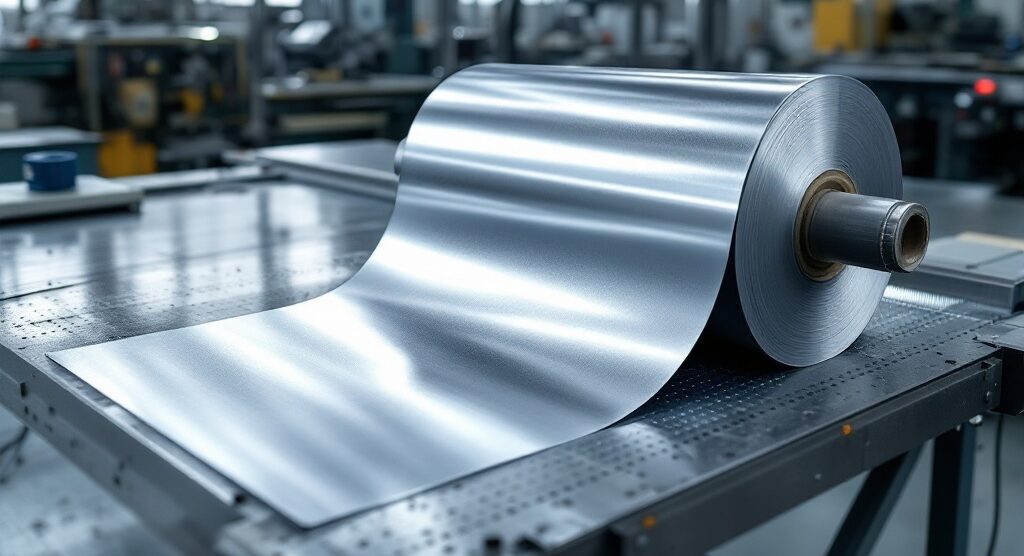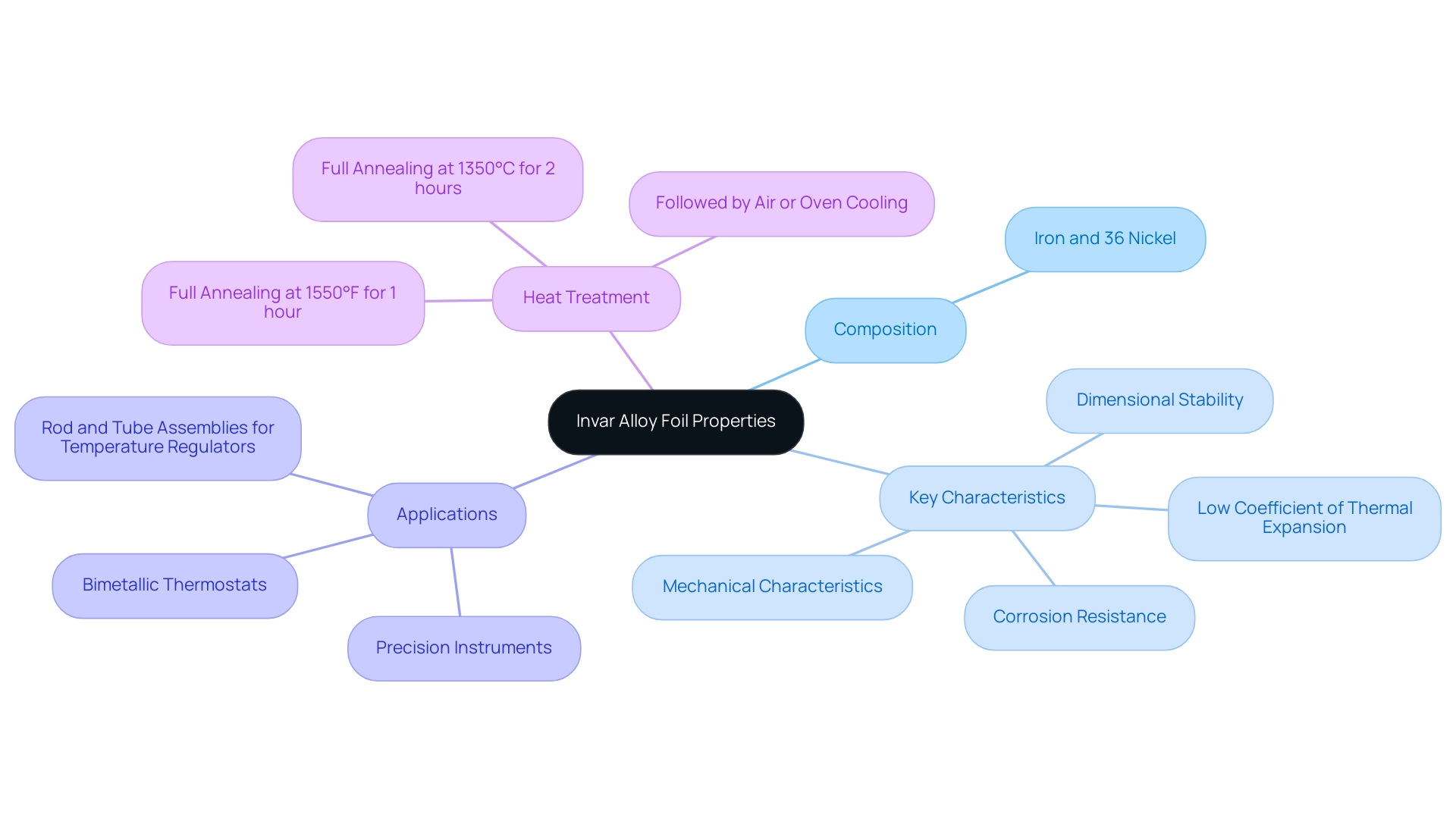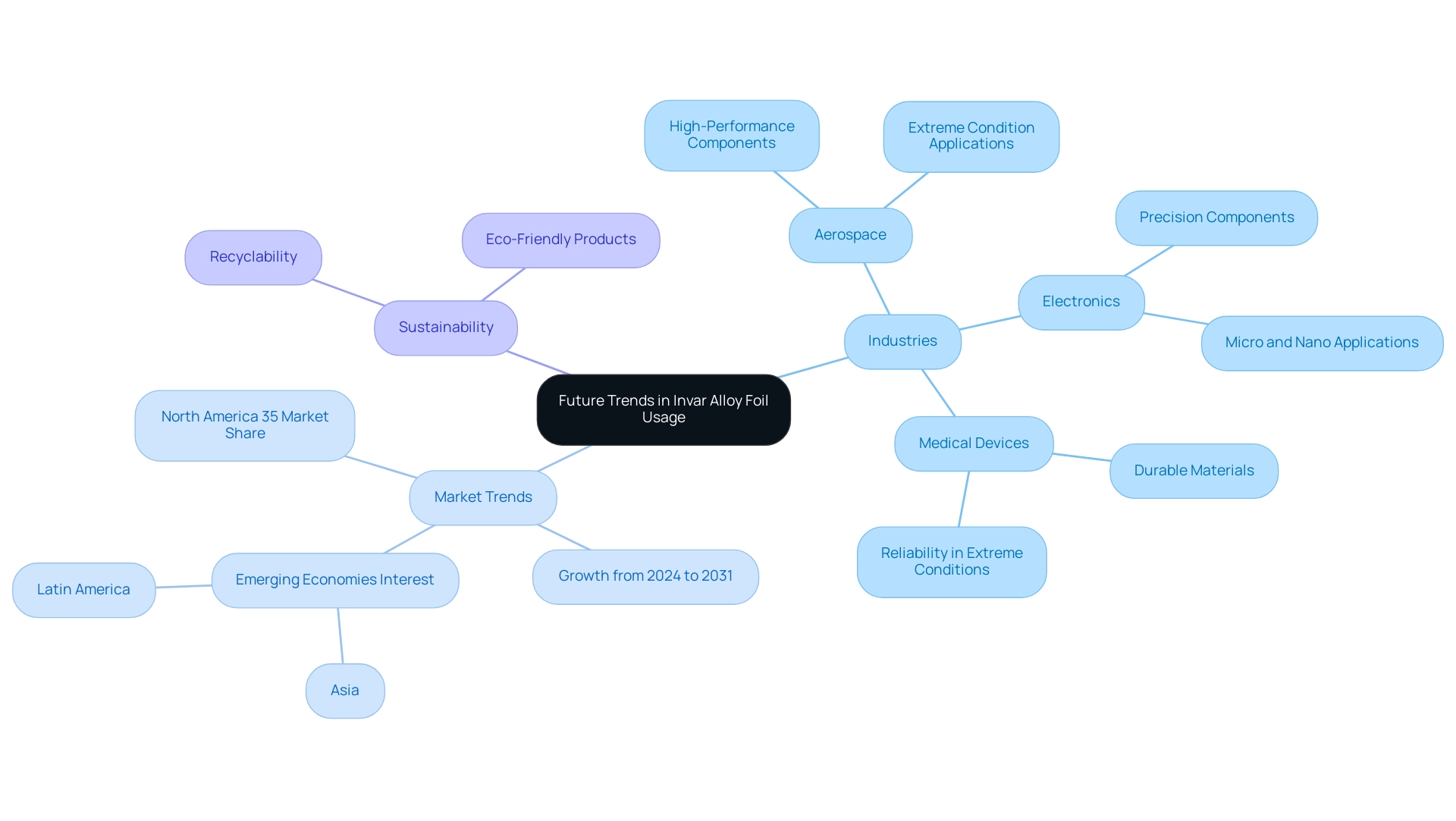Blogs

What is Invar Alloy Foil? A Comprehensive Overview of Properties and Uses
Introduction
Invar alloy foil stands at the forefront of modern engineering, characterized by its unique composition of iron and 36% nickel, which grants it an exceptionally low coefficient of thermal expansion. This remarkable property is not merely a technical detail; it is a game-changer for industries that demand unparalleled dimensional stability in their precision instruments and components.
As the manufacturing landscape evolves, the relevance of Invar extends beyond traditional applications, finding its place in cutting-edge sectors such as:
- Aerospace
- Electronics
- Medical devices
The intricate processes involved in producing Invar foil, from melting to annealing, ensure that its superior mechanical properties are preserved, thereby meeting the rigorous standards of high-precision applications.
As procurement managers navigate the complexities of material selection, understanding the distinct advantages of Invar alloy foil becomes essential in driving innovation and maintaining competitive edge in an increasingly demanding market.
Understanding the Properties of Invar Alloy Foil
The invar alloy foil, mainly made of iron and 36% nickel, is characterized by its exceptionally low coefficient of thermal expansion (CTE), which is essential in scenarios needing outstanding dimensional stability. This characteristic allows invar alloy foil to maintain its shape and size despite temperature fluctuations, making it highly suitable for precision instruments and components. Alongside its dimensional stability, this invar alloy foil demonstrates notable mechanical characteristics and resistance to corrosion, enhancing its application in specialized sectors.
Notably, industries that require invar alloy foil for materials capable of withstanding thermal variations without compromising performance find its attributes particularly valuable. Recent studies suggest that the utilization of a specific metal in conjunction with high expansion materials is crucial in settings such as bimetallic thermostats and rod and tube assemblies for temperature regulators, highlighting the material’s significance in contemporary engineering solutions. Moreover, it is crucial to acknowledge Domadia’s leadership in producing thermostatic bimetals, which guarantees dependable and innovative electrical and thermal uses.
Our Mica tape products, designed for high-temperature resistance and electrical insulation, offer exceptional flame resistance and dielectric strength, making them indispensable in the construction of fire-resistant cables and other critical electrical insulation systems. Significantly, feeds can be raised between 50 and 100%, improving the performance of the material in various uses. Lastly, proper heat treatment is essential for maintaining low internal stress in Alloy 36 during fabrication and service; recommended parameters include:
- Full annealing at 1550°F for 1 hour
- Full annealing at 1350°C for 2 hours
This should be followed by air or oven cooling, ensuring the integrity and performance of Alloy 36 in various uses, particularly after extensive forming or welding.

Applications of Invar Alloy Foil in Industry
This invar alloy foil is essential to many high-precision uses across different sectors. Its exceptional stability under temperature fluctuations makes invar alloy foil a preferred material in the electronics sector, particularly for the manufacturing of precision instruments such as thermometers and gauges. In aerospace fields, invar alloy foil is essential for parts requiring high dimensional precision, such as satellite structures and optical devices, where even the slightest variation can lead to substantial performance problems.
The low thermal expansion properties of invar alloy foil also make it suitable for molds and tooling employed in precision manufacturing. Furthermore, its unique properties lend themselves to specialized applications, including seismic instruments and laser systems that rely on invar alloy foil, where maintaining dimensional integrity is paramount. In settings where explosive potential is a concern, the use of Non-Sparking Tools alongside this specific metal can enhance safety and reliability, as the characteristics of this material complement the functionality of these tools.
As sectors progressively emphasize accuracy and dependability, the importance of invar alloy foil as a specialized metal sheet continues to rise. This trend is underscored by the global clear brine fluids market, which is anticipated to reach a valuation of USD 1.39 billion by 2030, reflecting a CAGR of 3.1%. The increasing need for high-performance materials in industries such as oil and gas further highlights the significance of the invar alloy foil.
As noted by Ursula Koslik, Director of Marketing & PR, ‘OpenPR has proven to be a very good and reliable partner to our media agency,’ highlighting the importance of reliable partnerships in advancing industry standards.

Manufacturing Processes for Invar Alloy Foil
The production of a specific metal composite sheet involves a sequence of carefully monitored procedures, such as:
- Melting
- Casting
- Rolling
- Annealing
Each is essential for maintaining the final product’s integrity. Initially, raw materials are melted in a precisely regulated environment to guarantee both purity and consistency. Afterward, the molten Invar is cast into ingots, which are then rolled into thin sheets.
This rolling phase demands exacting control over temperature and pressure to preserve the alloy’s low thermal expansion characteristics. Following the rolling process, the material undergoes annealing, a critical heat treatment that alleviates internal stresses and enhances mechanical properties. Quality control is essential during these phases to guarantee adherence to international standards and specifications crucial for high-precision uses.
As noted by Zapp, ‘Furthermore, the low thermal expansion and its tight control allows the use of Zapp SuperClean Invar 36 over a large temperature range, even in combination with other materials.’ This highlights the importance of upholding strict quality control standards in the production of invar alloy foil to satisfy the requirements of various sectors, including aerospace and precision instrumentation. Additionally, the market for invar alloy foil is divided by category and usage, including 36 and Super variants, which are essential for comprehending particular market demands and growth areas.
The effective elastic modulus of the Super Invar mirror-holder utilized in lithography machines is stated to be 120–130 GPA, offering quantitative support for the discussion on the mechanical characteristics of these specialized materials. Furthermore, the photochemical etching procedure, which is crucial for producing apertures while reducing internal stresses, emphasizes the practical uses of these manufacturing processes.

Comparison with Other Alloys
This metal foil is often assessed together with substances such as stainless steel and aluminum, both of which are common in precise uses. While stainless steel is known for its excellent corrosion resistance and structural strength, it falls short when it comes to thermal expansion properties, with a coefficient of thermal expansion (CTE) value of 0.800. In contrast, the unique characteristic of low thermal expansion in invar alloy foil makes it particularly advantageous in contexts that demand high dimensional stability.
A case study titled “The influence of heat input on microstructure and porosity during laser cladding of this alloy” highlights how varying heat input affects the microstructure and porosity of the material, further demonstrating its performance traits in precision uses. Conversely, aluminum is celebrated for its lightweight nature and superior thermal conductivity; however, it exhibits greater susceptibility to thermal expansion compared to other materials. This distinction highlights the superiority of invar alloy foil in scenarios where maintaining precise dimensions under varying temperature conditions is essential, such as in the manufacturing of scientific instruments and aerospace components.
As Lucas noted, “Many thanks for all the useful tips,” emphasizing the importance of informed material selection. By comprehensively understanding these material comparisons, procurement managers can make well-informed choices tailored to specific project requirements, ultimately enhancing the performance and reliability of their applications.

Future Trends in Invar Alloy Foil Usage
The outlook for the metal foil is exceedingly optimistic as industries increasingly gravitate towards precision and efficiency in their technological advancements. Sectors such as aerospace, electronics, and medical devices are witnessing a surging demand for materials capable of withstanding extreme conditions while ensuring dimensional stability. Significantly, North America is projected to lead the metal market with a 35% market share, fueled by advanced manufacturing technologies and robust aerospace and defense industries, especially in the United States.
The rise of 3D printing and nanotechnology presents exciting new avenues for the application of this alloy, as manufacturers search for materials that deliver reliable performance at micro and nano scales. Moreover, in a time when sustainability is a primary concern, the recyclability of this metal sheet makes it an attractive option for eco-friendly products. As Pavel Uncuta, Founder of AIBoost Marketing, aptly states, ‘It appears that the Alloy market is poised for significant growth from 2024 to 2031!’
- 📈 Exciting times ahead for innovation and technology! These trends collectively signify that invar alloy foil is poised to become a pivotal component in the future landscape of high-performance materials.

Conclusion
Invar alloy foil is increasingly recognized as a cornerstone of modern engineering, with its unique properties playing a critical role across various high-precision applications. Its remarkably low coefficient of thermal expansion enables it to maintain dimensional stability in environments characterized by temperature fluctuations, making it indispensable in sectors such as aerospace, electronics, and medical devices. As industries continue to prioritize precision, the demand for Invar alloy foil is expected to rise, further solidifying its relevance in cutting-edge technologies and applications.
The meticulous manufacturing processes that produce Invar foil ensure the integrity and mechanical properties necessary for high-performance applications. From the initial melting to the final annealing stages, each step is designed to preserve the alloy’s advantageous characteristics. This rigorous attention to detail not only meets but exceeds the stringent requirements of critical sectors, highlighting the importance of quality control in the production of Invar alloy foil.
As procurement managers navigate the complexities of material selection, understanding the distinct advantages of Invar alloy foil becomes essential. The comparison with other materials, such as stainless steel and aluminum, underscores Invar’s superior performance in applications where dimensional stability is paramount. The future looks promising for Invar alloy foil, with emerging trends such as 3D printing and heightened sustainability efforts positioning it as a favorable choice for innovative applications.
In summary, Invar alloy foil stands as a vital material for industries that demand precision and reliability. By leveraging its unique properties and understanding its manufacturing intricacies, organizations can drive innovation and maintain a competitive edge in an increasingly demanding market.




